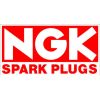





Description
Features
Dimensions
Heat Range Information
Reviews
Q & A
Why Competition Supplies?
These NGK V-Power spark plugs are offered individually and feature a unique V-Cut in the center electrode that directs the spark to the edge, helping the spark develop more rapidly. This feature increases ignitability and reduces quenching, the action of the cooler centre and ground electrode draining the flame core energy through heat transfer.
Available in a variety of temperatures and with standard or protruding tips.
Part numbers:
NGKR5671A-7 NGKR5672A-8 NGKR5672A-9 NGKR5671A-9 NGKR5671A-8
NGKR5671A-7 NGKR5672A-8 NGKR5672A-9 NGKR5671A-9 NGKR5671A-8
NGK V-Power Racing Spark Plugs
Part number: R567-GROUP




 (0)
(0)
From £7.50 VAT EX (£9.00 VAT INC)
Heat Range
Model
Heat Range, Model are required

 01327 857991
01327 857991




















